James Bond might have driven Astons, but George Smiley was a Rover P6 man. Alec Guinness gave Smiley international TV fame two years after Star Wars, and two years after P6 production ended. Guinness was 65 then, and like Smiley he outwardly looked the part of an aging British gentleman, exactly the kind of person associated with “old” Rovers in 1979.
Part of Smiley’s advantage as an international spy is that he looks boring and unassuming – even stodgy – a very traditional civil servant. Underneath hides a cerebral, calculating genius who remains far more forward-thinking and capable than his peers even when he’s pushed out of “the circus” and into retirement.
In both of Guinness’ portrayals of John Le Carré’s Smiley, 1979’s Tinker, Tailor, Soldier, Spy and 1982’s Smiley’s People, he drives a 4-cylinder P6 as his personal car.
Smiley and the P6 were perfectly suited. P6 production ended in 1977, by which time it had been superseded by the glamorous SD1 and also laid low in the press by British Leyland’s quality ills. It had served Rover, and then BL, with distinction for 14 years and its once-daring shape was now very familiar.
In the late 1970s and early 1980s, when the BBC was making the two series, the P6 was just a used car making its way down the depreciation ladder – and one that seemed widely favored by aging traditionalists. People such as “former high-ranking civil servants.”
Just like Smiley, the familiar exterior belied the fact that it was still a highly sophisticated car even in the late 1970s. It brimmed with advanced thinking and interesting technical solutions. Those qualities were still there right up to the end, and the P6 is still an excellent drive today.
When it was new in 1963 it was totally unlike any previous Rover – a clean sheet design in every sense and arguably more different from the P4 and P5 than the SD1 was from the P6. It was the very first European Car of the Year, and helped define what became “executive cars.”
The Turbine People
Rover dated all the way back to 1878, but the modern incarnation of the company took shape in 1929-30 when, having nearly gone bankrupt, the company was reorganized and placed in the hands of Spencer Wilks. Wilks, a long-time Hillman manager and son in law of William Hillman, left that company after Rootes bought it in 1928.
Spencer’s brother Maurice joined him at Rover in 1930 as chief engineer. To help, the brothers brought in a bunch of former Hillman staffers. The first three years were rough – but the pair successfully turned the company around into a maker of upmarket but not quite luxury cars; think Humber, Lancia, or Buick.
The company built two new factories, at Acocks Green (later Rover’s engine plant) and Solihull (later a car factory) in the mid-1930s as part of the “shadow factory” rearmament plan and began making aero engines in 1937.
It was this work that led to Frank Whittle, father of the jet engine, approaching Rover to partner with his company, Power Jets, for consulting on developing his jet engines. Though Whittle and Rover ultimately fell out and the project ended up with Rolls-Royce, the entire experience was transformative for the Wilks Brothers.
Maurice had been directly involved in the engineering and as the war wound down believed that gas turbine power could be applied to cars. He wasn’t alone. The elusive promise of gas turbines in cars would be explored until the late 1970s by many automakers.
But the brothers knew they needed more expertise – so they hired Frank Bell and Charles Spencer “Spen” King away from Rolls-Royce. By 1948 they had a prototype engine that worked. Together with designer Gordon Bashford, who’d started as an apprentice at Rover in 1930, this pair created a series of turbine-powered idea cars starting with JET 1 in 1950.
In 1954 Peter Wilks, nephew of Spencer, returned to Rover after having left to create the Rover-based Marauder sports car in 1950. Wilks had originally joined the company just after the war. On his return, he was put in charge of the turbine program, and then became assistant chief engineer in 1956.
The series of turbine concepts, which by 1956 was on the T3, a rear-engined, four-wheel-drive, almost Porsche-like turbine coupe – didn’t really help sell cars.
Rover’s road cars – represented in 1955-56 by the upright “Auntie” P4 – were conservative, the opposite of the gas turbine, jet age future. Rover’s designers were in the process of finishing up the P5 – modern, but still traditional in most ways and destined to be a favorite of Parliamentarians.
The team of Peter Wilks, Spen King, and Gordon Bashford were all thinking about the future and wanted to do more ambitious things. So did the Wilks Brothers, who understood that their aging clientele needed to be supplemented with younger buyers. Having created the successful Land Rover business in the background, they were not afraid of new ideas, it was more of a question of how to fit them into a very traditional brand.
The success of the Citroën DS helped make the case for a great leap forward to replace the aging P4.
Designing the Rover P6
When it came to working on a potential new P-series car, the team pitched a radical idea. Rover’s new car should be as technologically advanced as possible but smaller than the still-to-come P5, built around a central inner monocoque, powered by a flat four or maybe a turbine, and featuring hydraulic suspension (sound familiar?).
Some of those elements were a bridge too far, but the brothers definitely agreed on much of what was presented. Development began in late 1956.
The P6 has often drawn direct comparisons with the DS, and in terms of its structure, that’s accurate. The structure of both cars is a “base frame” unibody to which the outer panels are bolted. Gordon Bashford had wanted to try this idea for some time before the appearance of the DS, and designed the structure with two goals in mind – keeping rust confined superficial outer panels and making styling changes easy.
The bane of unibody cars in the 1950s was keeping up with style, as Hudson in America learned. As P6 and DS owners would learn later, the drawback of the inner monocoque was that if it does rust, it’s entirely out of sight, out of mind.
The structure also made the car very safe. The P6 was designed from the outset to keep the central structure intact while the outer panels absorbed the impact of a collision – crumple zones just like Béla Barényi’s ideas at Mercedes and no doubt influenced by them.
To this frame were added some of the ideas from the T3 turbine – not four-wheel-drive but its De Dion rear axle, all disc brakes, and all-coil suspension. The De Dion rear was essential in the rear-engine T3, but an advanced way of ensuring a good ride, nimble handling, and less unsprung weight in the P6.
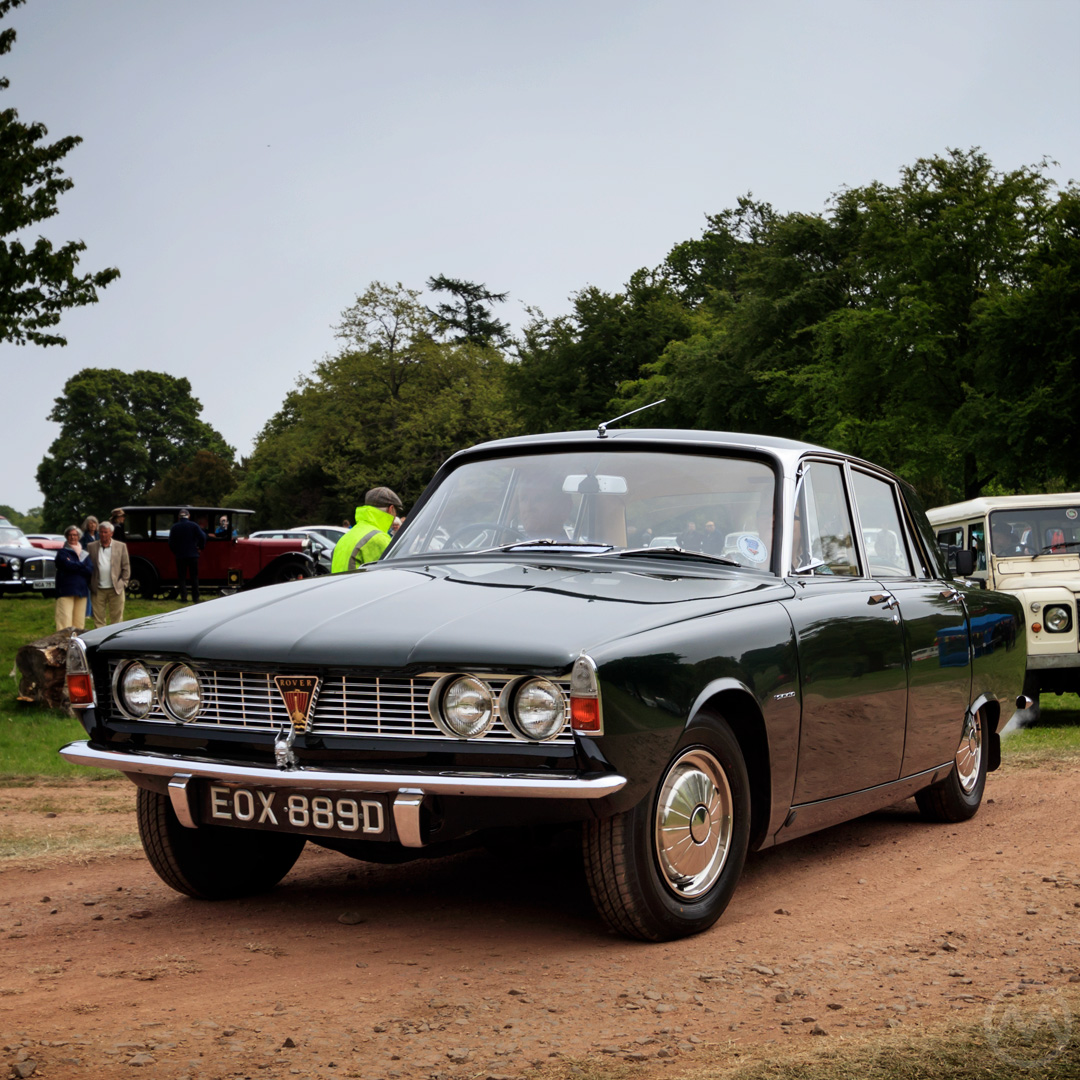
Brakes were Dunlop discs all around, inboard at the rear. It would come only with radial tires. Race car stuff in the ‘50s.
The front suspension was particularly unusual, with upper wishbones braced by horizontal coil springs mounted way up high against the firewall. Why such a strange arrangement? To create a very wide engine bay with the goal of possibly housing a gas turbine inside.
In parallel with developing 4-cylinder piston engines for the car, the Turbine program continued – but even though Rover would continue to play with Turbines into the mid-1960s (most notably the Rover-BRM turbine race cars), they were a dead end for road cars.
In 1961, Rover would show off the T4 – essentially a front-drive P6 with gas turbine power. It was powerful and smooth, but like all the other turbines, far too hungry for fuel in the post-Suez crisis world and too expensive to build. Even before it was shown it was not destined for production.
The T4 was the first public display of the basic styling that Rover stylist David Bache and his team had been working on since 1957. Bache was inspired by the DS, and some elements of the DS were plain to see in early sketches, but the result was clearly its own identity.
Early on the roofline and sides took shape more or less in their finished form. The front end, however, looked a bit like a Renault Dauphine or Panhard Dyna Z, and came in for significant reworking in 1959-60.
What emerged was a sharp, clean, and modern shape with an almost wedge-like profile. It owed nothing to any previous Rovers except the badge and looked futuristic but tasteful.
The Modern Executive
To many British customers in the 1950s, big 2-liter cars were the province of mainstream brands while “luxury” cars were meant to focus on 2.6 liters or more or at the very least pack small sixes. Rover had offered four-cylinder P4s, they hadn’t been popular.
The P6 project was to be built in much greater volume than previous Rovers, have all the traditional brand virtues, but sell to a new customer and, perhaps, a few old customers looking for smaller cars post-Suez. The era of Prime Minister Harold MacMillan (1957-63) was one of increasing standards of living and purchasing power, and mobility.
MacMillan opened the first section of superhighway in the U.K., the Preston by-pass, in December of 1958. A year later the first sections of the M1 were open. Although suburban luxury was never quite the phenomenon in the U.K. that it was in the USA, newly empowered consumers wanted nicer things – and they liked technology.
Rover aimed its new car squarely at the newly affluent young executives of the day, some of whom had already been tempted by Slough-built Citroëns and would never consider a P4. The high-tech emphasis was meant to offset the decreased size of the car. The value wasn’t in size.
The heart of the P6 was an-all new, 1,978-cc overhead-cam “Heron Head” four. It had nothing in common with Rover’s older fours or sixes and was a bit harsh at high rpm, but well suited for a combination of power and MPG.
The car’s official name would be “Rover 2000,” and from its appearance it might have been from the year 2000. The modernity of the styling meant Bashford’s idea of easily-replaceable outer styling was never utilized.
Inside it was neither a British drawing room nor a Detroit wurlitzer. After the very earliest cars, wood was eschewed in favor of plastic. It had some traditional Rover cues, but was more about easy functionality than frills. It had lots of thoughtful touches unheard of in the 1960s, like a tilt wheel.
By early 1963 the car was in preproduction on an all new line Solihull installed at a cost of £10M. It would be built in far greater numbers than the earlier Rovers, which meant taking a careful approach to early production. But Rover was in a rush – Standard-Triumph were about to launch their own 2000.
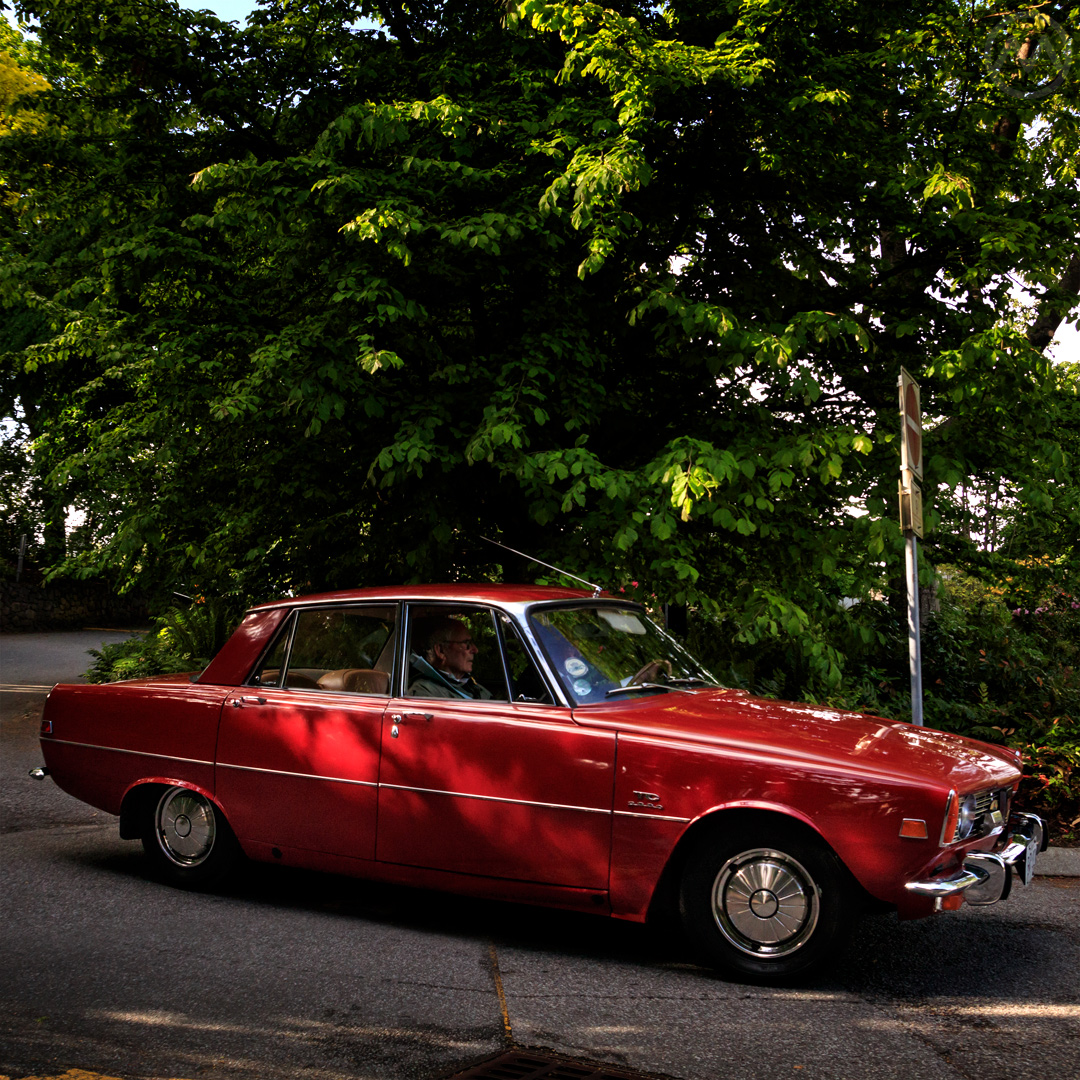
In 1959, aborted merger talks between Rover and S-T had led Triumph to discover the P6 project. Working on their own car of similar size, they eventually scrapped their “project Zebu” but revived it in 1961 to expand the Triumph name upward and replace the last Standard car, the Ensign. The Triumph 2000 benchmarked the P6, even if the car was not available for direct comparison.
Both cars were launched in October, 1963.
At Earl’s Court William Martin-Hurst, who had taken over from Spencer Wilks as managing director in 1962, detailed to the press how the company had put more than 445,000 miles on a group of 15 prototypes and then another half million more on preproduction cars. Peter Wilks, meanwhile, said “‘This is an engineer’s company. That means nobody pushes engineers around here, but it means we also get the blame.”
He needn’t have worried. For the first couple of years, Rover’s biggest problem was making enough of them – there were waiting lists and Solihull ran at full capacity. If there was any sad note in 1963, it was that Maurice Wilks passed away just weeks before the car’s introduction. Peter Wilks replaced him in early 1964.
Initially, Rover built 550 cars a week. This wasn’t enough to meet demand, so the plant was to be expanded. But by the end of 1964, even meeting the 550 a week was a challenge because of periodic work stoppages. In March of 1965, Martin-Hurst complained that the company could probably sell twice as many P6s if it could just get production ramped up.
Rover was a profitable company and desperately needed labor, and was willing to take on anybody, which seemed to contribute to unofficial strikes. But even the separate unions operating at Solihull didn’t agree with each other (some of their national unions urged them to work with management or together). Nor was management sympathetic, seeing the workers as holding back the company at a critical time (what time isn’t for management?).
In August of 1966, manager A.B. Smith excoriated the workers in public – calling a recent strike “a catastrophe for Britain.” A worker who’d broken an office window in a fit of rage was transferred to another part of the plant. 8 workers struck in protest, claiming that the incident was partly due to management not responding to complaints about an unsafe conveyor. Unwilling to cross the line, 700 more workers were idled and the plant ground to a halt.
Things were resolved to some degree after Smith beseeched workers to return, but it didn’t set a good pattern. Nor was it isolated.
Production eventually hit two shifts and 850 cars a week – Rover were still making as many P6s as they could build. When P5 sales slacked, workers from that line were transferred across the street from the old building to the P6 line.
Changes to Car and Company
If buyers had any complaints about the P6, it was that it wasn’t quite as fast as the slightly cheaper Triumph 2000. In 1966, a twin-carb model with a revised head and higher compression made it decisively faster than its rival. Around the same time, the Dunlop discs were replaced with Girlings, which seemed to wear better. The regular car became the 2000SC, and gained an optional Borg-Warner automatic.
The 2000TC was the best P6 yet, but there was still more to come.
Various sources don’t necessarily agree, but it’s generally thought that on a trip to Wisconsin in 1964 to sell gas turbines to Mercury Marine, Rover’s North American rep J. Bruce McWilliams first saw GM’s small alloy Buick 215-cid V8, created for the 1961 Buick Special and Oldsmobile F-85. McWilliams and Martin-Hurst both agreed that this engine would be a good fit for replacing Rover’s aging large six in the P5.
It could also fit in the big bay of the P6 – and that point was much more important, because the P6 was unlikely to be replaced any time soon. The Turbine was long dead and Rover was spending whatever it had on producing P6s. Spen King and his team had prepared a stretch-nose 6-cylinder P7 to be called the “Rover 3000,” but it was a costly revision.
King opposed buying an outside engine, but the solution was just too good. The V8 did not weigh appreciably more than the four and while the front crossmember would have to be changed and the battery moved to the trunk, it wasn’t that hard to shoehorn it in.
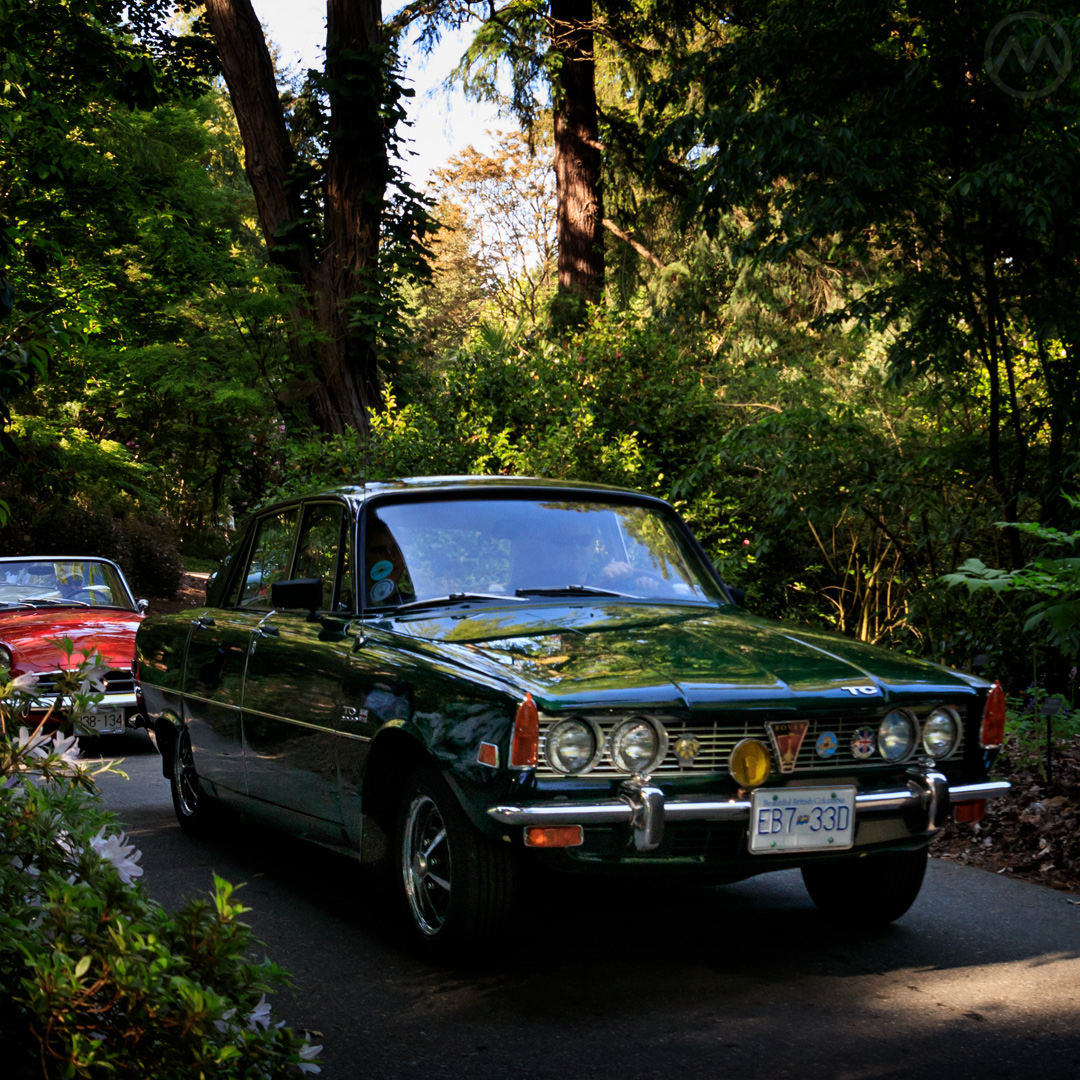
Both men lobbied hard to get GM to sell the engine to Rover and succeeded in January, 1965. The P7 was axed immediately and Martin-Hurst enlisted the help of Buick engineer Joe Turlay to help modify the engine for Rover’s use. It was some time before new V8 tooling moved to the factory at Acocks Green and production started, but V8s supplanted the old sixes in the P5 in mid-1967.
By then, Leyland, parent of Standard-Triumph, had acquired Rover for £25M. Now Triumph and Rover were part of the same family. In April of 1968, the V8 “P6B,” called the “Rover 3500” appeared. It came only with the automatic at first.
An instantly good combination of a willing powerplant mated to an already good chassis, the 3500 was a genuinely world-class sedan in terms of power and dynamics. Owners had to be prepared for 18 mpg and pay a stiff 21% price premium, but even with these costs it was a great value. The Daily Mail called it “the most desirable Rover ever built,” and in this case it wasn’t tabloid hyperbole.
Of course, yet another change in ownership happened when Leyland was merged with British Motor Holdings in January, 1968. The firm officially became British Leyland about a month after the 3500 went on sale.
British Leyland’s Rover P6
The “Leyland” half of British Leyland was comprised of rather healthy Leyland commercial vehicles, Triumph, and Rover. The other half, the former British Motor Corp./British Motor Holdings, was in much worse shape. It was hoped that the mega merger would turn things around for the ex-BMC brands. By the end of 1969 the income from Leyland, Rover, and Jaguar (part of BMC since 1966) was subsidizing everything else.
That year, Martin-Hurst retired and was replaced by A.B. Smith. Rover only got a voice on the BLMC board when Rover Chairman George Farmer was appointed to it more than a year after BLMC’s creation.
The internal politics of British Leyland, where every division competed with the others for resources, were not unlike those of Le Carré’s fictional circus, big, unwieldy, and having far too many personal fiefdoms. Still, “old Rover” people remained at the helm until 1975 – George Farmer into 1973, Smith into 1974, and Bernard Jackman – a production man who’d worked on getting the V8 ready for the P6 – until 1975.
The key to BL’s survival was investing in Austin and Morris. Development of the next generation of Rover, which would replace the P5 and P6, was already underway by the end of 1967 – but it was repeatedly delayed, and Rover’s attention was also spent on developing the Range Rover and a abortive mid-engine sports car, the P9, which was too close to Jaguar territory.
As the P8 was late, the P6 had to be freshened up. The cars were given modest cosmetic changes like a new hood and grill and some interior and lighting changes – nothing major. The following year brought the ultimate P6 – the V8 finally got a manual, but it also saw the cancellation of the P8 project after four years of work and the retirement of Peter Wilks for health reasons.
The P8 had done very poorly in early crash tests, and it was given the axe. That left the P6 to soldier on until a replacement for both it and the Triumph 2000/2500 could be designed and put into production, a process which would take five long years. When P5 production ended in 1973, it left the P6 as the only Rover car.
P6 sales held steady all through the early 1970s despite a precipitous drop in quality early in the decade. The cars still drove very well and looked good, even if they were no longer new.
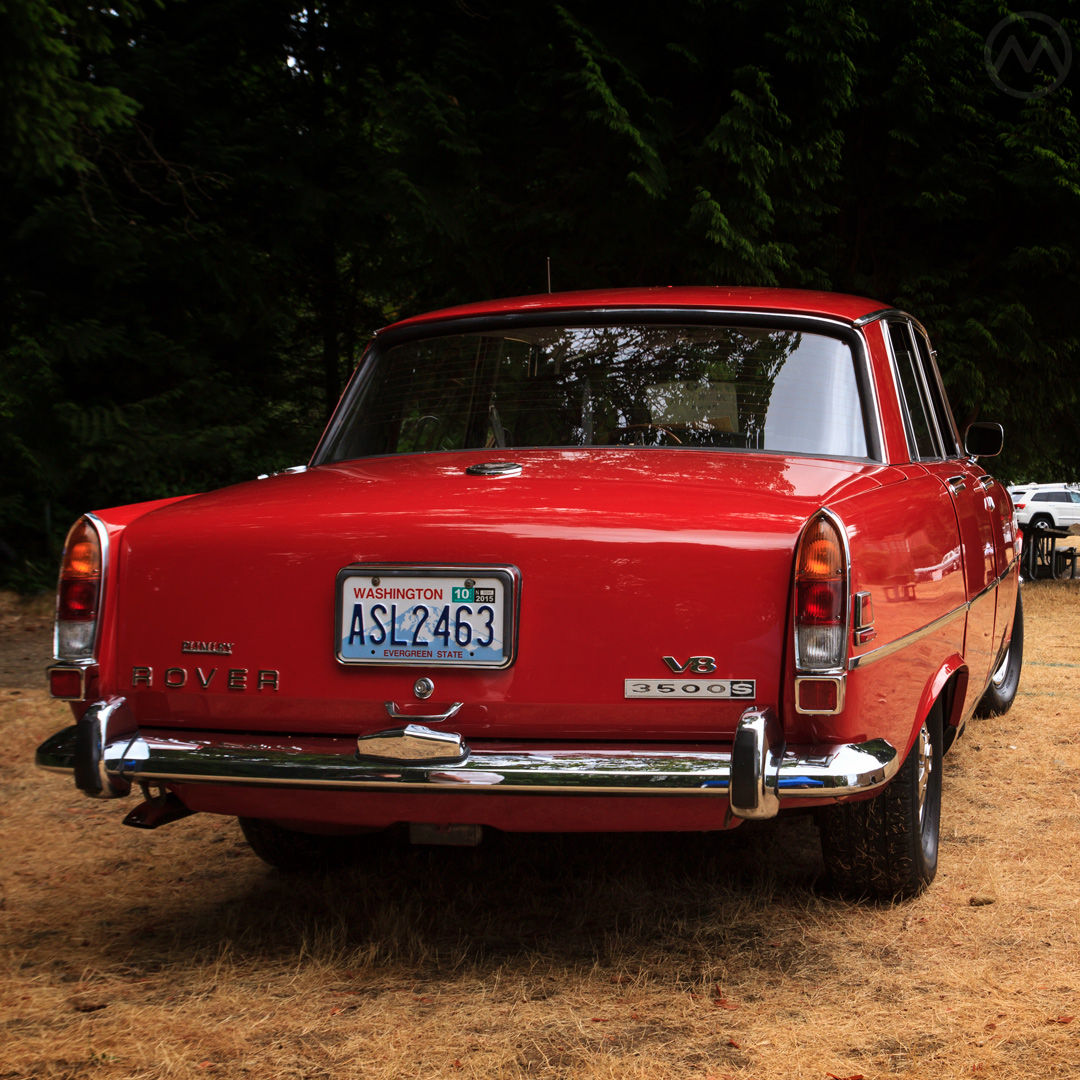
Jackman, the production man turned managing director, had a long history with Rover and it was he who presided over the final changes to the P6. His father had worked for Rover since 1903 and had worked directly with the Wilks brothers in the 1930s.
Although Jackman had much less autonomy than previous bosses at Rover thanks to British Leyland’s disparate structure, he tried to make the most of his authority, improve quality, and hopefully revive the company’s fortunes.
He echoed Peter Wilks’ old views in an interview with Motor in 1974: “If you have a poor design, no matter what you do on the line or how good your facilities are you will still turn out a poor product … In the Rover organisation as a whole quality therefore begins in engineering.”
Quality remained a mixed bag thanks in part to problems with substandard components and, of course, fighting between labor and management – though Solihull was less troubled than many other manufacturing sites.
In 1973, the 2000 models became the 2200, an increase in displacement to offset power lost to new emissions regulations – and that was the P6’s final update. The future Jackman envisioned was one of the SD1, but before that could happen British Leyland ran out of money in late 1974, and Jackman, in his early 60s, resigned a few months later.
In 1975, industrial disputes at Solihull got much, much worse and there was nobody left from the old guard to try and smooth things over. Still, sales remained robust through OPEC and right up until the summer of 1976 when the SD1 arrived. P6 production continued a while longer – with the last car rolling off the line on March 19, 1977. About 330,000 were made.
Life in Retirement
The sleek SD1, designed by largely the same team and even styled by David Bache himself, made the P6 seem instantly old. What had been ultra modern in 1963 was now too familiar to be seen the same way. Still, the P6 had remained popular and in demand for most of its life and effectively sustained Rover for years, ultimately preserving the make for the many years of vehicles that followed.
The SD1’s troubled launch and BL’s ongoing troubles seemed to erase memories of any quality ills the 1970s P6s might have had, and the car started to find collector appeal by the late 1980s.
Both it and its Triumph rival helped establish the 2-liter executive class – which would eventually be overrun with German entries. In the late 1960s, it was on an even playing field with the “Neue Klasse” BMW 2000Ti and had far more established credibility with a wider audience. It was still competitive against the original 5 series in the early 1970s. Nobody could have predicted a scenario in which, 20 years later, BMW would own Rover.
As George Smiley lamented about his successors at the top of “the circus,” he similarly might have said that BL management “Missed the changes, wouldn’t face them. Left the future up for grabs.”
Most of the cars seen in this article were photographed in the North America – where the Rover P6 had a limited impact but where OldMotors is based. At some point in the future, we’ll focus just on these export models. If you have photos to share of late-in-the-run P6s, we’d love to see them – contactoldmotors@gmail.com.

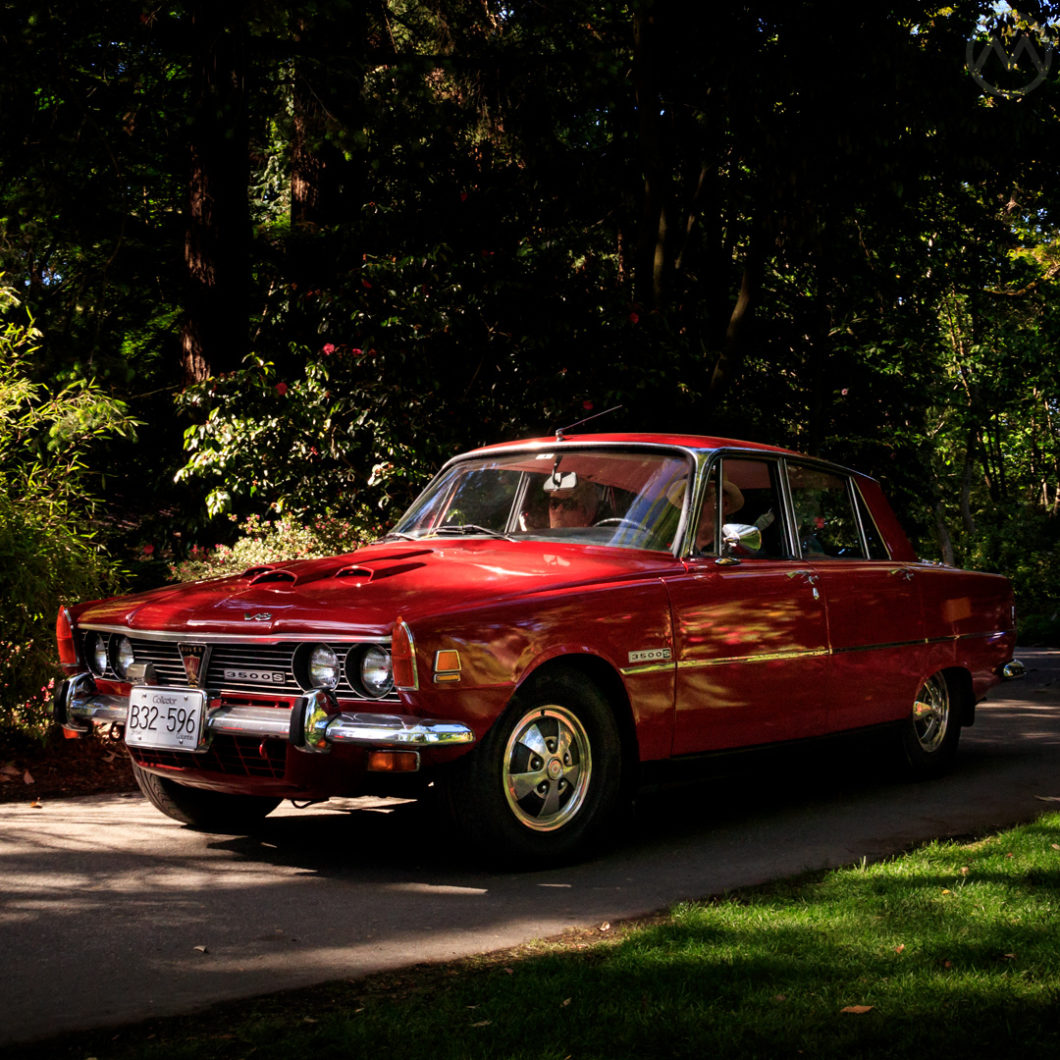
Great article. I owned a 2000 TC that I had bought used back in the day and enjoyed it immensely until the day it stopped and no one could get it running again!
The red 1970 rover that on the picture with Washington license plates .
I bought same exactly looking rover from an local auction supper clean looking one.
I was interested if it is the one on the picture .
Thanks